The AT-4 anti-tank is a rocket launcher of Swedish origin. It was developed by Bofors to replace the earlier Miniman and to offer a sort of disposable single shot Carl Gustav. The AT4 is a potent weapon but will not piece the most modern main battle tank armor over the frontal arc. A much larger version which was able to do that, called the AT12, was being developed, but was cancelled as the Cold War came to an end.
| Country of originSwedenEntered service1986Weapon caliber84 mmProjectile84 x 462 mmWeight (loaded)6.7 kgProjectile weight?Warhead typeHEATLength1 016 mmMuzzle velocity285 m/sSighting range500 mRange of effective fire against tanks300 mRange of effective fire against area targets500 mArmor penetration400 mm The AT-4 is a man-portable, disposable, single-use anti-tank weapon, developed by FFV (now SAAB-Bofors) in Sweden. The name of the weapon is a play on its 84 mm bore (AT-4 is pronounced as “Eighty-Four”), as well an indication of its role (AT for “anti-tank”). It was and remains one of the world’s premier expendable infantry anti-tank weapons. It is also distinct from most other weapons in its class, being a recoilless gun rather than a rocket launcher, though many sources still mistakenly identify it as the latter. The AT-4 is also often assumed to simply be a disposable version of the Carl Gustav M2, but the only major attribute their ammunition shares is the same bore. The effort to develop what would become the AT-4 began with an early 1970s analysis of (then) contemporary Soviet armor. The findings were bleak; the Miniman disposable anti-tank weapon first fielded in 1968 was found to be inadequate against armor like that on the T-62, while the T-72 was a tough nut to crack even with a flank shot, and almost invulnerable to the Miniman over its frontal arc. The Swedish Army had realized, in essence, that they had fielded the Miniman just in time for its obsolescence, and a successor was called-for in 1974. Work on the new weapon began in 1976 at FFV, the same company that had developed the Miniman. They basically scaled-up the 74 mm Miniman’s design, creating an 84 mm variant with an improved projectile and charge, and a largely new type of gun tube. Though these represented radical changes, the first firing AT-4 prototypes were submitted to the Swedish armed forces by the Spring of 1981, and over 100 had been test-fired by the same date in 1982. The AT-4 had also caught the attention of the US Army, who at that time was desperate for a new weapon in this class to replace the 66 mm M72 LAW anti-tank rocket launcher. While the Swedish Army was continuing to evaluate the AT-4 in 1983, it was one of 6 weapons tested by the US Army in the same year, and they surprised many with an announcement in November of 1983 that the AT-4 was formally selected as the LAW’s replacement. Several alterations were made to the AT-4 to suit US Army requirements, which resulted in the M136. In a peculiar reversal of the norm, the US military hurriedly adopted an innovative foreign weapon system, while the Swedish military’s testing and evaluation dragged-on for years afterwards. The M136 also impressed the Swedish Army, who requested that FFV incorporate some of its new features into the AT-4 as well. Sweden’s evaluation of the AT-4 continued for the next 3 years, before finally being formally adopted as the Pansarskott m/86. The AT-4’s gun tube is long and cylindrical, with numerous external fixtures. The muzzle is surrounded by a thick composite bracket, which in turn is enveloped by an octagonal shock absorber; the venturi is flared, conical, and has an octagonal shock absorber rim as well, though its visibly broader than the muzzle. Numerous brackets are wrapped around the tube, making quick identification by counting them relatively pointless. The shoulder pad on the aft underside has a broad salient shape, and includes a folding wire-frame shoulder rest with a short canvas strap; when extended, the shoulder rest takes-on a delta shape. A long tube covered by a conformal housing (which contains a cable used to fire the weapon) runs from the trigger mechanism to the breech along the top of the tube. The front and rear sights are located on the forward upper right side of the tube, underneath rectangular protective covers which can be slid-away when the sights needs to be raised. A rectangular foregrip is located just behind the muzzle on the underside of the weapon, and is folded against the tube when not in use (some AT-4s were produced without a foregrip). The firing mechanism, safety catch, and cocking lever are on top of the tube in its midsection, just behind the rear sight cover. The AT-4 is usually fitted with a sling, the swivels for which are located on the lower left side between the sight covers, and on the very bottom of the tube just in front of the venturi. Various stencilings and instructional decals are plastered onto the tube. AT-4s may be painted in different colors or camouflage patterns, but are usually solid olive drab in color. The construction of the AT-4’s gun tube is extremely similar to that of most modern disposable anti-tank rocket launchers, but is still able to cope with the overpressure of an 84 mm recoilless round. The tube consists of reinforced fiberglass, with numerous sheet steel and composite brackets. Unlike the Miniman, the bore liner is not metallic, although the venturi is made of aluminum. The shock absorbers on the AT-4 are made of a hard foam rubber material. The sights, trigger mechanisms, and shoulder rest frame are made of steel, while the sight covers, foregrip, and numerous other fixtures are made of plastic. The projectile itself has an aluminum shell, and the fins are probably made of aluminum as well. The AT-4 is rated for operating temperatures of −40 to +60 °C. The iron sights consist of a front post and a rear peephole, with the range adjustable for 100 m to 500 m, in 50 m increments. Two different peepholes are available for the AT-4; a 2 mm hole for use in broad daylight, and a 7 mm peephole for use at night and in order low-visibility situations. Interestingly similar set of sights are also used on the M141 BDM anti-structure rocket launcher, probably due to a similar range and trajectory. A variety of optics may also be fitted to the AT-4 by clipping them on, to include night vision optics, infrared optics, and laser aiming devices. The main body of the projectile is shaped like a generic artillery shell, with a cylindrical body, a finely-tapered conical nose, and a boattail. It has a diameter of 84 mm, a length of 462 mm, and a fin span of 290 mm. The trailing body consists of a metal shaft, enveloped by a spring-loaded assembly containing 6 stabilizer fins that spring into a hexagonal pattern when the projectile leaves the tube. The main body of the projectile is marked with a yellow band, for easy identification of UXO, should the projectile fail to launch and/or detonate properly. The projectile is fired down a smooth bore, and is stabilized solely by drag via its fins when in flight, as it does not rotate. Although the AT-4 is frequently referred-to as a “rocket launcher”, the projectile does not contain a rocket motor. The AT-4 projectile weighs 1.81 kg, and contains 453 g of Octol that force a thin copper charge liner into a jet-like penetrator upon detonation. This charge will penetrate up to 400 mm of RHAe at a 0-degree obliquity, but there is more to the lethality of the warhead than just its penetration. The AT-4 was the first anti-tank munition especially designed to employ enhanced lethality against armored vehicles, through what the manufacturer has termed “Beyond Armor Effects”. Using a number of special attributes built into the warhead, the damage caused to the interior of a penetrated armored vehicle and its occupants are dramatically increased, resulting in a significantly greater probability of disabling an armored vehicle. These effects include an instantaneous overpressure of 1 bar above normal (twice the ambient air pressure of the Earth’s atmosphere at sea level), greatly increased back-spalling and penetrator spatter, a flash of light over 100 times stronger than sunlight, greatly increased smoke from combustion of the warhead and armor during penetration, and more intense heat than that of a generic shaped charge of similar penetration. Exactly what components of the AT-4’s warhead create the Beyond Armor Effects are still highly classified (though observers have noted that it probably has something to do with the charge liner’s unusual trumpet-like shape, a focus ring around the front of the liner, or an additional layer of a special aluminum-based alloy bonded to the back of the liner), but as video footage and photographs of AT-4s hitting armored vehicles graphically demonstrate, they are not a marketing overstatement. The armor penetration figure is not uncontested however, as different sources offer different ratings. For example, some US Army field manuals state the penetration is as little as 356 mm, while others offer a significantly larger 450 mm figure. Some sources even claim that this weapon will penetrate 500 mm of RHAe. The advent of the more powerful AT-4-HP hasn’t added any clarification either, with penetration figures ranging from 500 mm to 600 mm. Given that the earlier 74 mm Miniman was rated to penetrate 350 mm RHAe, however, its safe to assume the 84 mm AT-4 is capable of at least 400 mm RHAe penetration. The AT-4 may be fired from a standing, sitting, kneeling, or prone position, though prone firings are typically forbidden during training. When firing from a prone position, the user must lie at a 45-degree angle off the axis of fire, as being exposed to the backblast at the venturi will result in severe injuries. To fire the AT-4, the user must first remove the safety pin at the rear of the launch tube, ensure no personnel are in the backblast area, and shoulder the weapon. If the iron sights are to be used, the user must slide the cover for the front sight rearward, slide the cover for the rear sight forward, and flip-up the sights. The cocking lever must then be flipped moved forward, upward, then to the right, then take aim at the target. When the target is in the user’s sights, the safety lever must then be held down, and the trigger button pressed-down by the user’s thumb; if the cocking lever is not set to the armed position and the safety lever held-down with the trigger is pressed, the trigger will not engage and fire the weapon. The user must also *squeeze* the trigger until it “breaks” (like the trigger on a typical rifle) rather than simply jabbing it, as doing the latter could throw-off the aimpoint. The weapon will then fire, and the tube is discarded; it isn’t designed to withstand the stresses of multiple firings, and thus cannot be reloaded. As the AT-4 is for all intents and purposes a cannon, it should come as no surprise that its backblast is exceptionally powerful. The backblast area has a 90-degree angle, with the danger area within 40 m of the venturi, and the caution area extending 40 m to 100 m behind the venturi. The danger area must be totally clear of personnel, animals, vulnerable equipment, and loose objects prior to firing, while personnel inside the caution area must take cover and protect their ears. The AT-4 must never be fired from inside an enclosed area, as the rebounding backblast will cause significant shock and hearing injuries to any personnel inside said space. The AT-4 has seen combat in numerous conflicts, to include the Afghan War, the Iraq War, and Operation Serval (the French Intervention in Mali). If the M136 is included, the list is expanded even further, to include every US ground war since Operation Just Cause (the 1989 Invasion of Panama). In several of these wars, the AT-4 proved its worth against armored vehicles of all shapes and sizes, it was able to defeat some structures, and it even proved valuable against unarmored targets such as trucks. A number of limitations of the AT-4 also became evident in these conflicts. For example, the AT-4’s Beyond Armor Effects were quite limited when it was used to engage structures, and the huge backblast was often a serious problem. It became increasingly clear from these events that anti-structure variants and a countermass were required for future conflicts, which resulted in the development of a variety of new variants (see below). The AT-4’s known operators include Argentina, Bosnia and Herzegovina, Brazil, Chile, Colombia, Croatia, Denmark, Estonia, France, Greece, Indonesia, Iraq, Ireland, Latvia, Lebanon, Lithuania, Malaysia, the Netherlands, the Philippines, Poland, Sweden, Taiwan, the UK, the US and Venezuela. This also includes the M136 variant, as publications are relatively vague on which nations operate which (although the M136, specifically, is used by the US, and not the AT-4). According to the SAAB-Bofors webpage on the AT-4 as of late 2016, a total of 15 nations operate this weapon. As of 2016, over 300, 000 AT-4s have been manufactured, and full-scale production is ongoing. |

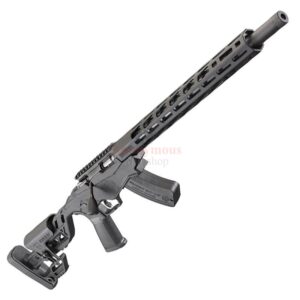
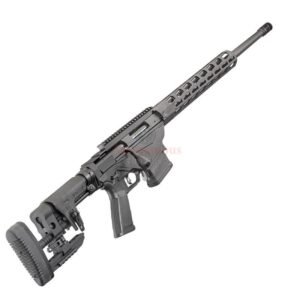


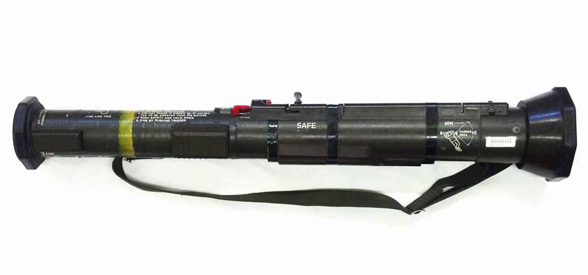

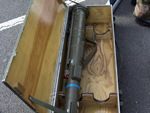
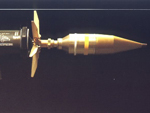
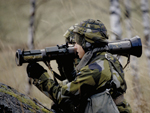
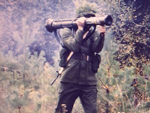
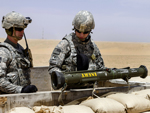
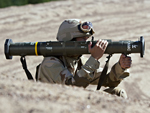
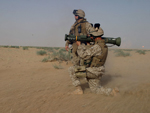

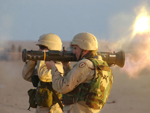
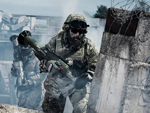

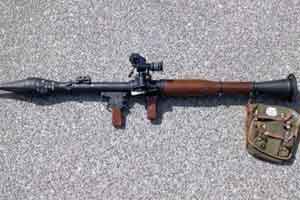
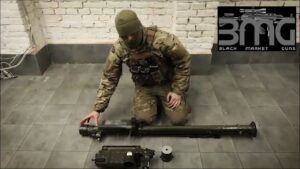
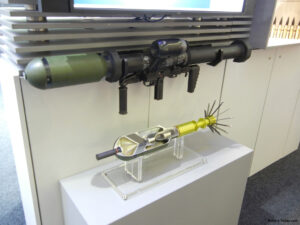

Reviews
There are no reviews yet.